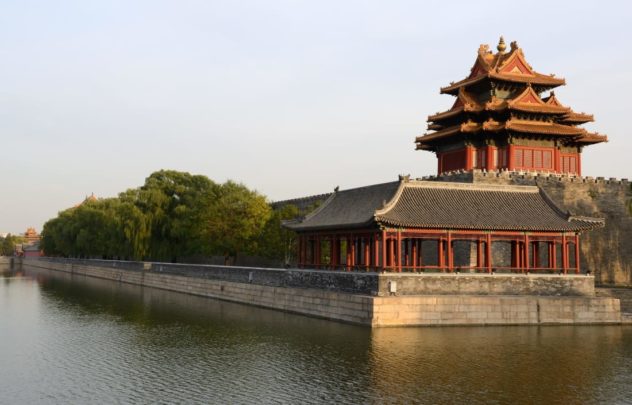© Frédéric Soltan/Corbis/Getty Images via CNN
Vocabulary:
- unrecognizable /uhn-rek-uhg-NAHZ-uh-buhl/
- conjure /KUHN-jer/
- pre-eminence /pree-EM-uh-nuhns/
- symmetrical /si-MET-tri-kuhl/
- lavish /LAV-ish/
[adjective] – very different to before, or changed very much, and therefore not able to be recognized
It was my first time seeing my friend after five years. She’s already unrecognizable.
[verb] – to make something appear by magic or as if by magic
A woman in our neighborhood claims she can conjure up spirits of the dead.
[noun] – the quality of being more important or better than others
The way the previous emperor showed his pre-eminence was not pleasing.
[adjective] – made up of exactly similar parts facing each other or around an axis; showing symmetry
The building is known for its symmetrical shape, making it famous worldwide.
[verb] – give something in generous or large quantities on
Remi doesn’t like being lavished by material things. She’d prefer genuine kindness over those.
Article reading:
Kidd described the city as manifesting an illusion “of supernatural space and time” in his book “Peking Story.” If you’re inside the palace complex, only then can you see that the city surrounding it remains constant. This is what the Forbidden City is: designed to fool our eyes and conjure an illusion of unchanged scenery from within.
The massive palace complex covers more than 720,000 square meters of land, making it the largest in the world. A 52-meter wide moat and a 10-meter high wall separate it from the rest of China’s capital city, which results in a fortress-like design. The manor is intended to have this architecture to protect the emperor, as well as assert his pre-eminence over his subjects.
Inside the complex, the designs remain intricate, symbolic, and symmetrical. The golden yellow tiles embody the emperor’s link to the sun, whereas the dragon symbolizes the power entrusted to him. The palace buildings, made of wood, were shielded from lightning strikes with conductors; still, regular fires and other natural disasters like earthquakes became the structure’s weakness for six centuries. Majority of the Forbidden City’s buildings are rebuilt multiple times due to this.
The Forbidden City has endured 600 years of natural disasters and political conflict, but is recognized as the proud embodiment of China’s rich history and culture. Its restoration and preservation are lavished with money to secure its future in the years to come. Would you like to visit China’s Forbidden City of illusion and seat of power someday?
Comprehension Questions:
- What do the golden yellow tiles in the imperial palace symbolize?
- What makes the Forbidden City’s imperial palace complex largest in the world?
- How did Kidd describe the city in his book “Peking Story”?
- How many years did the Forbidden City endure both natural disasters and political conflict?
- According to the article, what is the manor intended to be?
Discussion Questions:
- What is your opinion about the imperial palace complex’s size?
- How do you think the Chinese protected the Forbidden City from natural disasters and political conflict for 600 years?
- In Japan, what cultural and historical values do temples and palaces convey?
- What places in Japan that have rich historical significance do you recommend?
- Why do you think it is important to preserve historical heritage?
